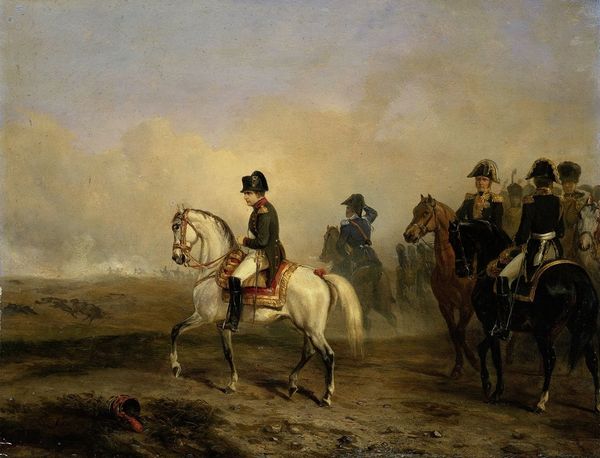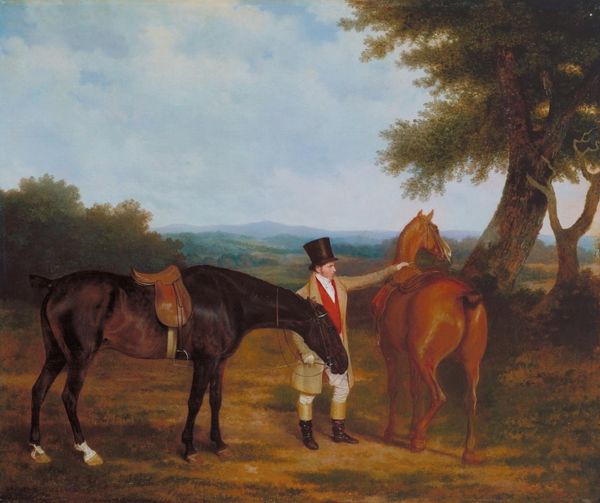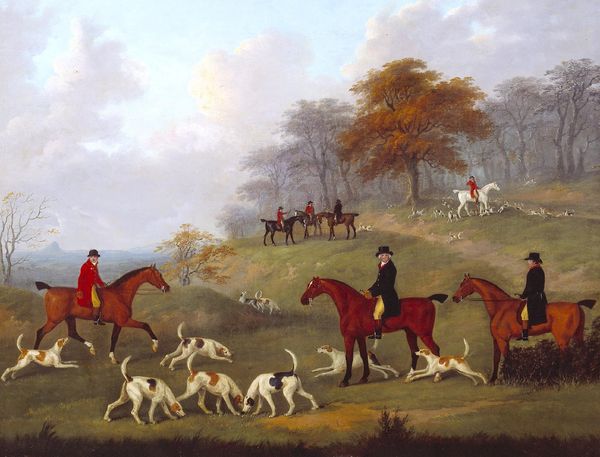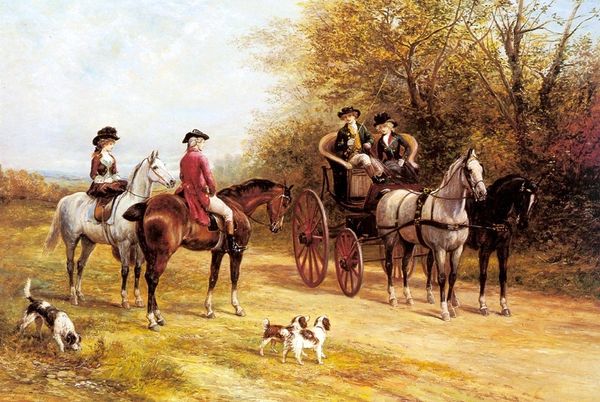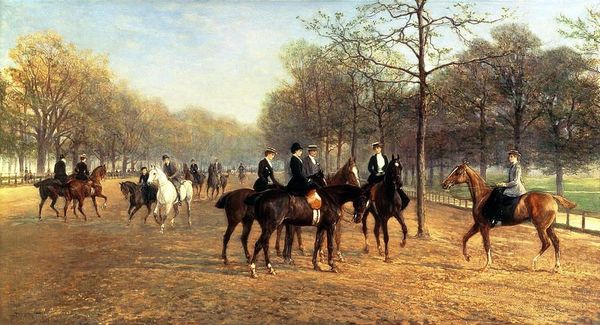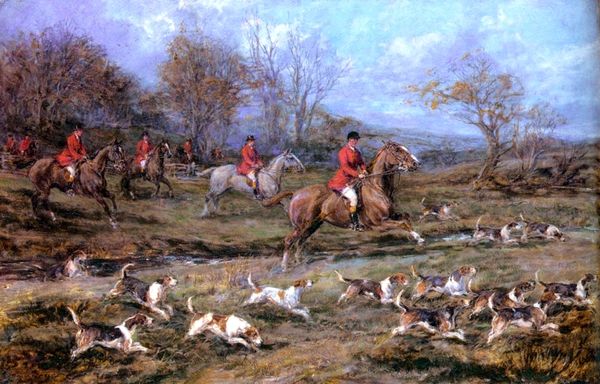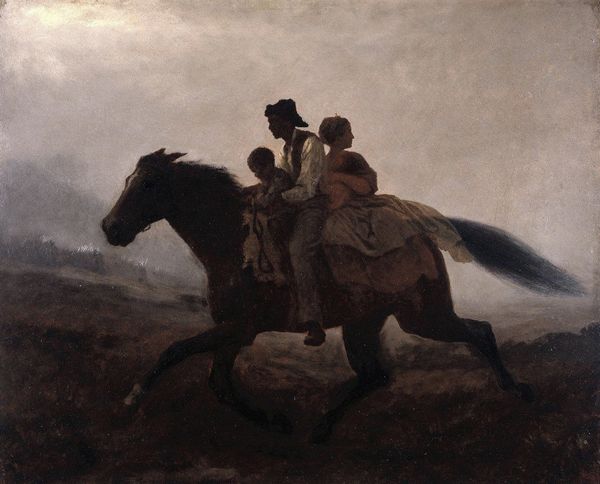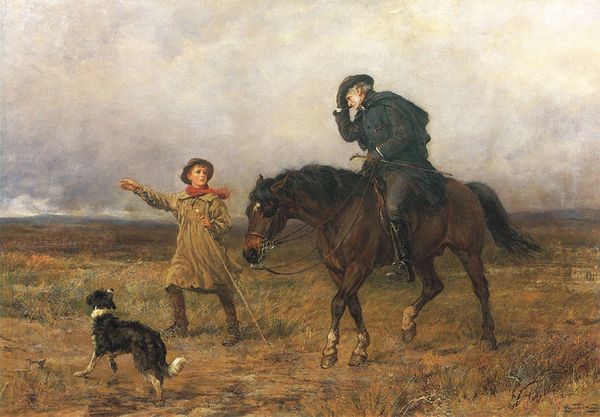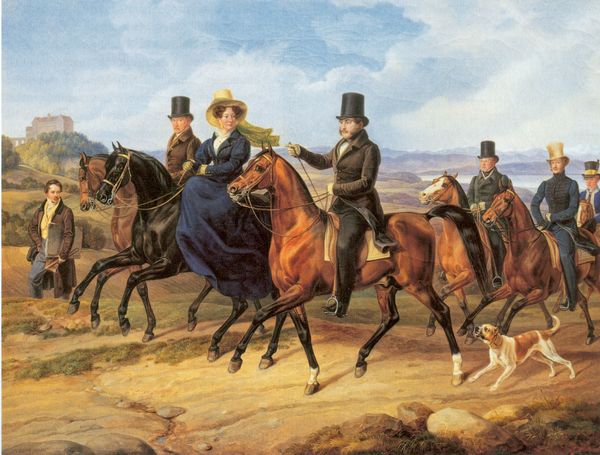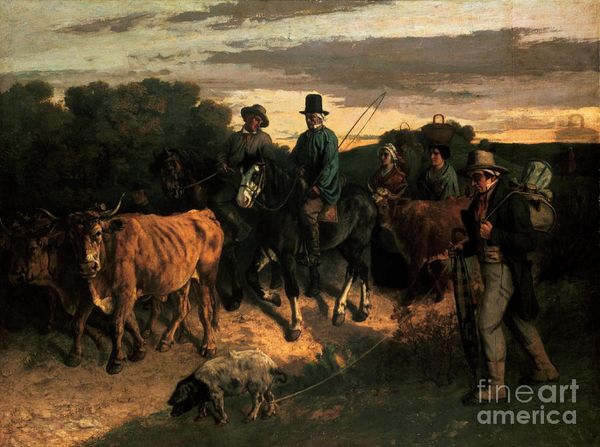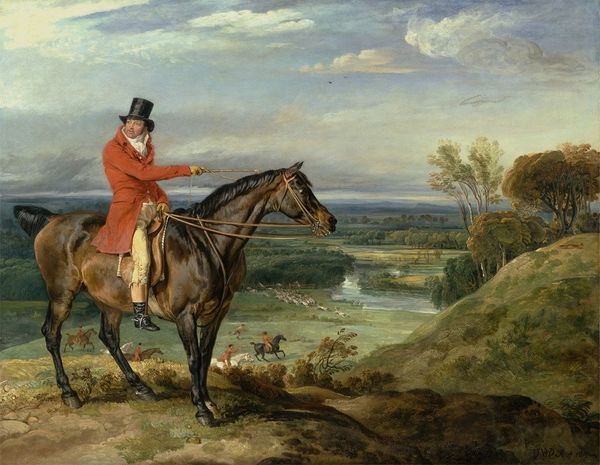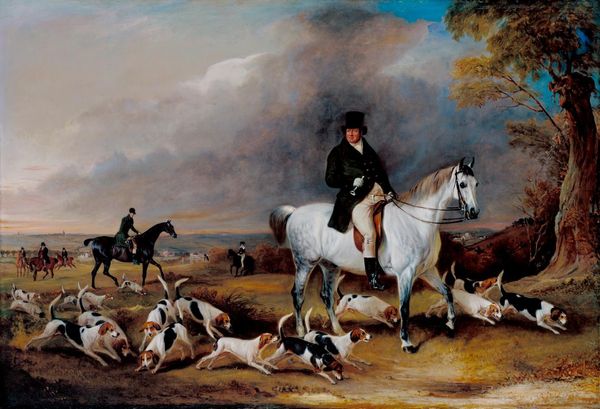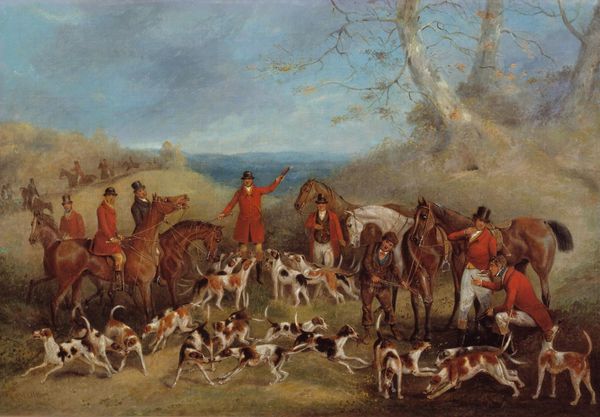
painting, oil-paint
#
portrait
#
painting
#
oil-paint
#
landscape
#
oil painting
#
romanticism
#
animal portrait
#
horse
#
animal drawing portrait
#
genre-painting
Copyright: Public domain
Curator: What strikes you first about this genre painting? This one is titled, "Out for a Scamper", by Heywood Hardy. Editor: The sheer momentum. Everyone seems caught in a beautiful, frenetic dance through the undergrowth. It makes me feel breathless just looking at it! Though that one rider seems poised with such intent… Curator: Precisely! And all this created with oil paint, layers and layers of it, no doubt. Notice how Hardy uses the earth tones, browns, and oranges, not just to depict the natural setting, but perhaps to comment on social stratification through leisure. It speaks of the hunt as ritual. The hounds in the front appear at their leisure. They lead these aristocrats. What price did each costume have and what was it like to take care of that? Editor: Yes, all that finely tailored red evokes tradition and the weight of social expectation. This painting really speaks to the relationship between humans, animals, and land, particularly in 19th century England, I'm sure of it. It makes me consider the immense energy expended on maintaining this spectacle. All those stables! What was used in the red fabric of that time to get the proper saturation? Madder? Cochineal? It takes armies to manufacture these elements. And yet, do the dogs even know they're supposed to scamper? Or are they just being themselves? Curator: Exactly! The materials speak volumes, even beyond the immediate visual narrative of riders, hounds, and the hunt itself. The very tools of its making become historical evidence. And doesn't it make you wonder, about their state of mind? Do the riders perhaps reflect something about human relationships, about power and the performative aspects of life itself? Were there expectations set by the manufacturer to meet the standard? Did Hardy have to order specific paints to get his commission? Editor: Perhaps that "scamper" has an edge of frantic desperation too. The riders seem trapped in an endless cycle of performance. So I circle back to that. It makes one wonder what was the role of those animals, then versus now? Is there perhaps, in this work, an early environmental critique emerging, where humans seem divorced from nature? Curator: You’ve given me so much to chew on! The painting transforms from a simple depiction of a hunt into something far more complex, about culture, labor, and possibly a dawning awareness of ecological cost. Editor: Well, yes, by focusing on the art supplies to create it and the human actions being reflected it suddenly creates something, almost from nothing. Thank you.
Comments
No comments
Be the first to comment and join the conversation on the ultimate creative platform.
